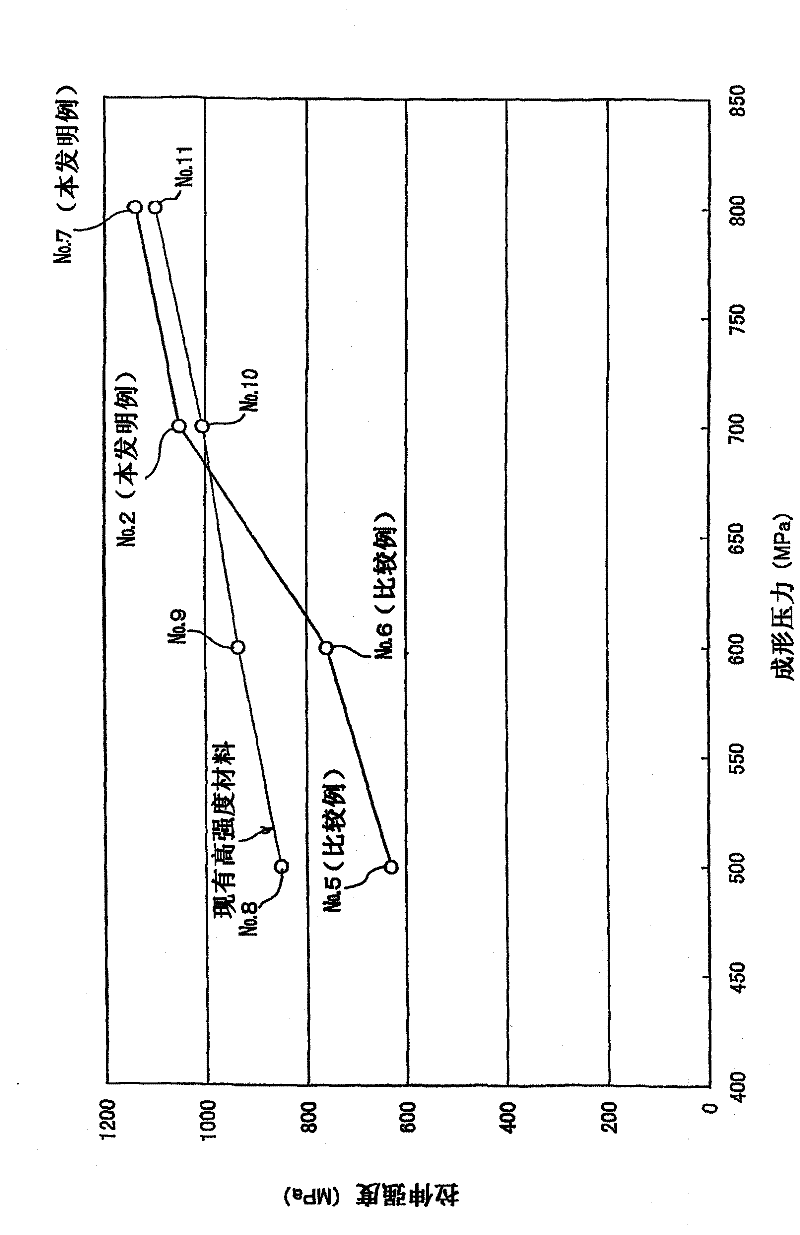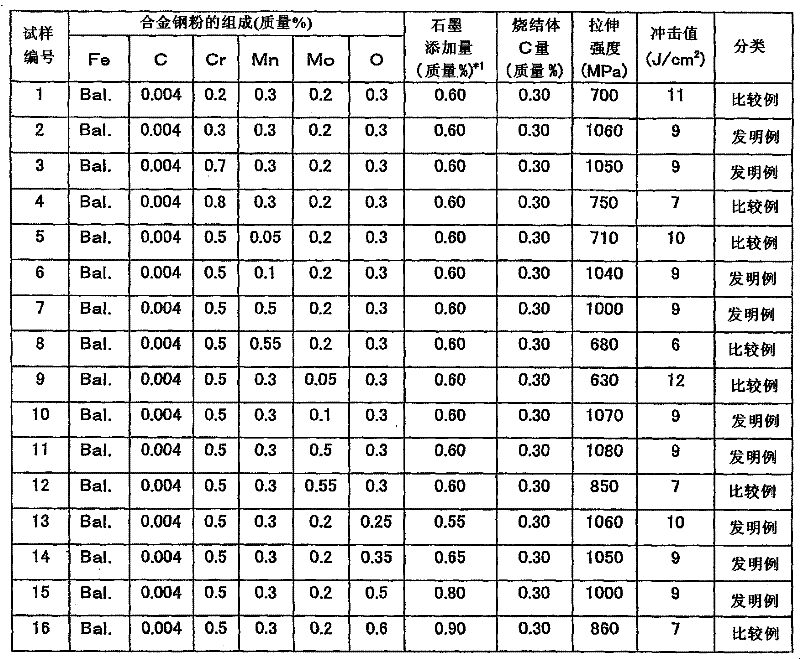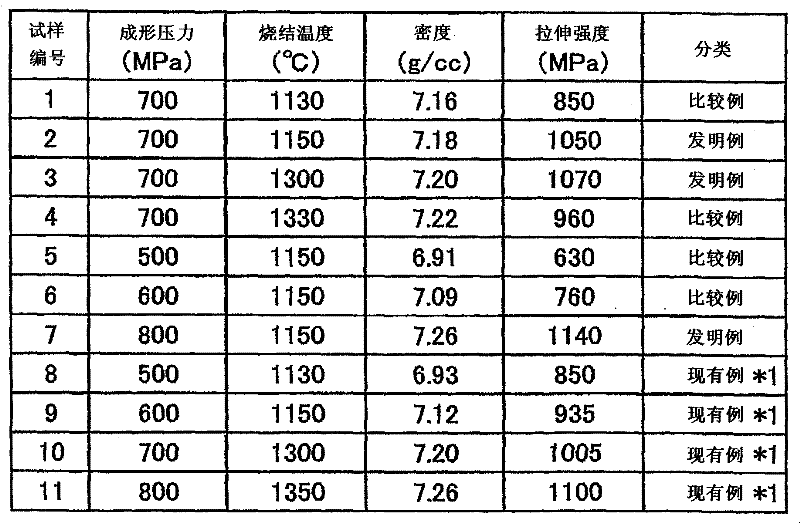Process for production of sintered compact by powder metallurgy
A technology of powder metallurgy and manufacturing method, which is applied in the field of manufacturing sintered bodies, and can solve the problems of reducing the strength of sintered bodies and the like
- Summary
- Abstract
- Description
- Claims
- Application Information
AI Technical Summary
Problems solved by technology
Method used
Image
Examples
Embodiment 1
[0081] Raw material powders obtained by adding and mixing graphite powder in an amount such that the amount of C after sintering (the amount of C in the sintered compact) was 0.3% by mass to alloy steel powders having the compositions shown in Table 1 were used. The raw material powder was molded into a rectangular parallelepiped molded body with a bottom surface of 10 mm×60 mm under a molding pressure of 700 MPa, and sintered at 1200° C. in a nitrogen atmosphere. After carburizing, quenching and tempering the cuboidal sintered body, the tensile strength and impact value were measured, and the metal structure was observed. In addition, C analysis was performed on the sintered body before carburizing, quenching and tempering. These results are shown in Table 1 together.
[0082] In Table 1, the sample number 1 (comparative example) in which the amount of Cr in the alloy steel powder is small has a low tensile strength of the sintered body due to the small amount of martensite ...
Embodiment 2
[0090] The alloy steel powder (Cr: 0.3% by mass, Mn: 0.3% by mass, Mo: 0.2% by mass, C: 0.004% by mass, O: 0.3% by mass) used in Sample No. 2 of Example 1 (Table 1) was used , the balance being Fe and unavoidable impurities), graphite powder and molding lubricant (zinc stearate) are added and mixed in such an amount that the amount of C after sintering (the amount of C in the sintered body) becomes 0.3% by mass raw powder. This raw material powder was molded into a cuboid molded body with a bottom surface of 10 mm×60 mm, and sintered in a nitrogen atmosphere. After carburizing, quenching and tempering this rectangular parallelepiped sintered body, the tensile strength and density were measured. The results are shown in Table 2 together with the molding pressure and sintering temperature. also, figure 1 The comparison between the relationship between the forming pressure and tensile strength of Sample Nos. 2, 5 to 7 and the relationship between the forming pressure and tensi...
Embodiment 3
[0096] A raw material powder obtained by adding and mixing graphite powder to alloy steel powder having the composition shown in Table 3 was used. The raw material powder was molded into a rectangular parallelepiped molded body with a bottom surface of 10 mm×60 mm under a molding pressure of 700 MPa, and sintered at 1200° C. in a nitrogen atmosphere. The tensile strength of this rectangular parallelepiped sintered body was measured, and C analysis was performed simultaneously. These results are shown in Table 3 together.
[0097] In Table 3, since the addition amount of graphite powder was fixed at 0.60 mass % for sample numbers 1 to 4, the amount of decarburization increased while the amount of oxygen in the alloy steel powder increased, and the amount of C in the sintered body varied. Thus, the tensile strength varies greatly. On the other hand, in Sample Nos. 5 to 7, since graphite powder was added in consideration of the amount reacted with oxygen during sintering, there...
PUM
| Property | Measurement | Unit |
|---|---|---|
| tensile strength | aaaaa | aaaaa |
Abstract
Description
Claims
Application Information
 Login to View More
Login to View More - R&D
- Intellectual Property
- Life Sciences
- Materials
- Tech Scout
- Unparalleled Data Quality
- Higher Quality Content
- 60% Fewer Hallucinations
Browse by: Latest US Patents, China's latest patents, Technical Efficacy Thesaurus, Application Domain, Technology Topic, Popular Technical Reports.
© 2025 PatSnap. All rights reserved.Legal|Privacy policy|Modern Slavery Act Transparency Statement|Sitemap|About US| Contact US: help@patsnap.com



